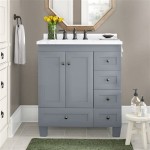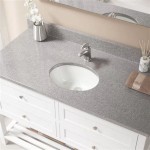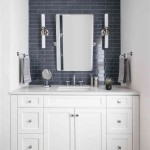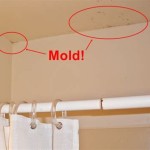The Superiority of Stainless Steel Bathroom Basin Waste Traps
The bathroom basin waste trap, often overlooked, is a critical component in any plumbing system. Its primary function is to prevent sewer gases from entering the bathroom while allowing wastewater to drain effectively. While waste traps are available in various materials, stainless steel has emerged as a particularly advantageous choice due to its durability, hygiene, and aesthetic appeal. This article will comprehensively explore the benefits and considerations surrounding stainless steel bathroom basin waste traps.
Durability and Longevity
One of the most compelling advantages of stainless steel is its exceptional durability. Unlike plastic or brass alternatives, stainless steel possesses inherent resistance to corrosion, rust, and degradation. This resilience makes it well-suited for the demanding environment of a bathroom, where constant exposure to water, humidity, and cleaning agents is common.
The corrosive nature of some drain cleaners and the fluctuating temperatures of water passing through the waste trap can cause premature failure in other materials. Plastic, for instance, can become brittle over time and prone to cracking, while brass, although more robust than plastic, can still be susceptible to corrosion, especially when exposed to certain chemicals or water with high mineral content. Stainless steel, however, remains largely unaffected by these factors, ensuring a significantly longer lifespan and reducing the need for frequent replacements.
The structural integrity of stainless steel also contributes to its durability. Its high tensile strength allows it to withstand pressure and physical stress, minimizing the risk of damage from accidental impacts or blockages. This strength also allows for thinner gauge steel to be used without compromising performance, making stainless steel options comparable in price to other materials despite their longevity.
Furthermore, the inherent resistance to corrosion means that stainless steel waste traps maintain their structural integrity over time, preventing leaks and potential water damage. This long-term reliability translates to reduced maintenance costs and greater peace of mind for homeowners.
Hygiene and Cleanliness
Maintaining a hygienic bathroom environment is paramount, and the choice of materials for plumbing fixtures plays a significant role in achieving this goal. Stainless steel boasts inherent hygienic properties that make it an ideal material for bathroom basin waste traps. Its non-porous surface prevents the absorption of bacteria, mold, and other microorganisms, minimizing the risk of harboring harmful pathogens.
The smooth surface of stainless steel also simplifies cleaning and maintenance. Unlike porous materials with textured surfaces, stainless steel can be easily wiped clean with standard household cleaners. This ease of cleaning eliminates the need for harsh chemicals or specialized cleaning tools that can damage other materials. Routine cleaning effectively removes soap scum, grime, and other debris, maintaining a sanitary and aesthetically pleasing waste trap.
Moreover, stainless steel does not leach harmful chemicals or toxins into the water supply. Certain plastics, particularly those containing BPA (Bisphenol A), can release these substances over time, potentially impacting water quality. Stainless steel, being an inert material, poses no such risk, ensuring the safety and purity of the water flowing through the waste trap.
The hygienic properties of stainless steel are particularly beneficial in environments where cleanliness is critical, such as healthcare facilities or homes with individuals who have compromised immune systems. By preventing the growth and spread of bacteria and mold, stainless steel waste traps contribute to a healthier and more hygienic bathroom environment.
Aesthetic Appeal and Design Versatility
While functionality is paramount, the aesthetic appeal of bathroom fixtures is also a crucial consideration for many homeowners and designers. Stainless steel possesses a sleek, modern aesthetic that complements a wide range of bathroom styles. Its clean lines and polished finish add a touch of sophistication and elegance to the overall design.
Unlike plastic alternatives that can appear cheap or flimsy, stainless steel exudes a sense of quality and durability. Its visual appeal elevates the perceived value of the bathroom, contributing to a more luxurious and upscale ambiance. The reflective surface of stainless steel also enhances the flow of light, making the bathroom feel brighter and more spacious.
Stainless steel waste traps are available in various designs and finishes to suit different aesthetic preferences. From brushed stainless steel for a more subtle and understated look to polished stainless steel for a high-shine, contemporary feel, there are options to complement diverse bathroom decor schemes. Manufacturers also offer stainless steel waste traps in different shapes and sizes to accommodate various basin designs and plumbing configurations.
The versatility of stainless steel extends beyond its aesthetic appeal. It can be seamlessly integrated with other bathroom fixtures made of stainless steel, such as faucets, showerheads, and towel racks, creating a cohesive and harmonious design. This design consistency enhances the overall visual appeal of the bathroom and contributes to a more polished and professional look.
Environmental Considerations
In today's environmentally conscious world, the sustainability of building materials is an increasingly important factor. Stainless steel is a highly recyclable material, making it a more environmentally friendly choice than many alternatives. At the end of its lifespan, stainless steel can be easily recycled and reused without significant loss of quality. This recyclability reduces the demand for virgin materials and minimizes the environmental impact of manufacturing new products.
The long lifespan of stainless steel waste traps also contributes to their sustainability. By reducing the need for frequent replacements, stainless steel minimizes the amount of waste generated over time. This durability translates to fewer resources consumed in manufacturing, transportation, and disposal.
Furthermore, the inherent resistance of stainless steel to corrosion eliminates the need for coatings or treatments that may contain harmful chemicals. Some plastic or brass waste traps require chemical coatings to prevent degradation, which can leach into the environment over time. Stainless steel, being naturally resistant to corrosion, eliminates this concern.
By choosing stainless steel bathroom basin waste traps, consumers can contribute to a more sustainable and environmentally responsible building practice. Its recyclability, durability, and lack of harmful chemicals make it a more eco-friendly option compared to other materials.
Installation and Maintenance
The installation of stainless steel bathroom basin waste traps is generally straightforward and can be performed by a qualified plumber or a homeowner with basic plumbing knowledge. The process typically involves connecting the waste trap to the basin drain and the drainpipe using standard plumbing fittings. Proper sealing is crucial to prevent leaks and ensure a secure connection.
The smooth surface of stainless steel facilitates cleaning and maintenance. Regular cleaning with mild soap and water is typically sufficient to remove soap scum, dirt, and other debris. Avoid using abrasive cleaners or scouring pads, as these can scratch the surface of the stainless steel. A soft cloth or sponge is recommended for gentle cleaning.
While stainless steel is highly resistant to corrosion, it is still advisable to avoid prolonged exposure to harsh chemicals or acidic cleaners. These substances can potentially damage the finish of the stainless steel over time. Regularly flushing the drain with hot water can help prevent the buildup of debris and maintain optimal drainage.
In the event of a blockage, a plunger or drain snake can be used to clear the obstruction. If the blockage persists, it may be necessary to disassemble the waste trap for a more thorough cleaning. Before disassembling the waste trap, ensure that the water supply is turned off to prevent flooding.
Cost Considerations
While the initial cost of stainless steel bathroom basin waste traps may be slightly higher than plastic or brass alternatives, the long-term cost benefits often outweigh the initial investment. The superior durability and resistance to corrosion of stainless steel translate to a significantly longer lifespan, reducing the need for frequent replacements and associated labor costs.
The reduced maintenance requirements of stainless steel also contribute to cost savings. Unlike other materials that may require specialized cleaning agents or treatments, stainless steel can be easily cleaned with standard household cleaners. This ease of maintenance minimizes the need for professional cleaning services and reduces the overall cost of ownership.
Furthermore, the reliable performance of stainless steel waste traps can prevent costly water damage from leaks or blockages. The structural integrity of stainless steel minimizes the risk of failure, protecting the bathroom from potential water damage and associated repair costs.
When evaluating the cost of bathroom basin waste traps, it is essential to consider the total cost of ownership, including initial purchase price, installation costs, maintenance expenses, and replacement costs. Stainless steel, with its superior durability and low maintenance requirements, often proves to be the most cost-effective option in the long run.
In conclusion, the advantages of stainless steel bathroom basin waste traps are numerous and compelling. From its exceptional durability and hygienic properties to its aesthetic appeal and environmental friendliness, stainless steel offers a superior solution for bathroom plumbing. While the initial cost may be slightly higher, the long-term benefits of stainless steel make it a worthwhile investment for homeowners and designers seeking a reliable, stylish, and sustainable plumbing option.

Qtm Stainless Steel Bottle Trap Bathroom Basin Waste Drain Chrome Plated Pipe Kitchen Circular Sink Faucet Water Tap Siphon

Sink Bottle Trap Stainless Steel Sinor Toilet Washroom Accessories In Kuala Lumpur Malaysia

Bottle Trap Chrome Bathroom Basin Sink Plumbing Push Pop Waste Pipe Up Wall Mounted Strainer Siphon Fixture Toilet Fitting Ca

Bathroom Sink Pipe P Kitchen Basin Waste Trap Bottle Stainless Steel Brass China Tube Made In Com

Stainless Steel Bathroom Wash Basin Drainer Sanitary Ware Waste Valve Overflow Bottle Trap Drain Pipe China Fitting Hardware Made In Com

Chrome Bottle Trap Waste Bathroom Basin Sink Pipe Willesden Bathrooms

Smartbath Bottle Trap Set With Waste Pipe For Bathroom Basin Kitchen Sink Wash Faucet In Buy

Stainless Steel P Trap 1 4 Inch Bathroom Basin Sink Waste With Reducing

Bathroom Basin Waste Bottle Trap Chrome Plated With Clack Sink Drain

Brass 1 4 Wash Basin Bottle Trap T Siphon Bathroom Plumbing For Waste Nd013 B
Related Posts







